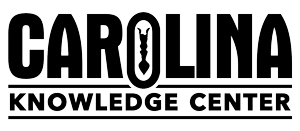The science classroom is an ideal environment to nurture the curious young mind. The perfect place for students to learn how to think like scientists and engineers. If you have been teaching science to students, then more than likely you have been teaching your students how to think like a scientist, but have you been teaching them how to think like an engineer? As part of the Next Generation Science Standards 3-Dimensional Learning, the standards are calling for K–12 educators to embed the 8 Science and Engineering Practices in to every science class. But how do engineers think? Is it all that different than how scientists think? While there are many similarities, engineers think and operate differently, and the expectation for all teachers who teach science class is to help young students develop very specific engineering practices. But why?! The goal is not to get all students to become engineers (although our economy does need more!) but it is the way that engineers think that is so valuable to all young people as they continue their journey of learning, finding a career and becoming educated citizens of the 21st century.
This webinar will look at the 8 NGSS Science & Engineering Practices and how they can be implemented in the classroom. We will explore the 4 stages of how real engineers work and how easily they can be incorporated into the science classroom. Highlighted will be how the important roles of communication, teamwork, success and failure are in designing solutions.
Webinar participants will get practical steps and tips that can be used in the science classroom to incorporate how engineers think. The webinar will feature students interacting with a teacher and with each other to find solutions. Grade-level appropriate content around energy will be used, hands-on activities, and opportunities for Q&A for all participants.
Learn More
Thinking Like an Engineer Whitepaper
 Engineers employ ways of thinking that help them solve problems, advancing technology and improving society. These ways of thinking can be introduced into elementary (grades K–5) classrooms to help all students think in ways that are similar to engineers and apply these ways of thinking to a range of problems.
Engineers employ ways of thinking that help them solve problems, advancing technology and improving society. These ways of thinking can be introduced into elementary (grades K–5) classrooms to help all students think in ways that are similar to engineers and apply these ways of thinking to a range of problems.
Science and Engineering Practices Infographic
Science and engineering naturally intersect in the real world. The best way to show students the subtle differences and striking similarities in the work of these fields is through the Science and Engineering Practices. Scientists explain phenomena; engineers solve problems. Share this student-friendly infographic in your classroom!






